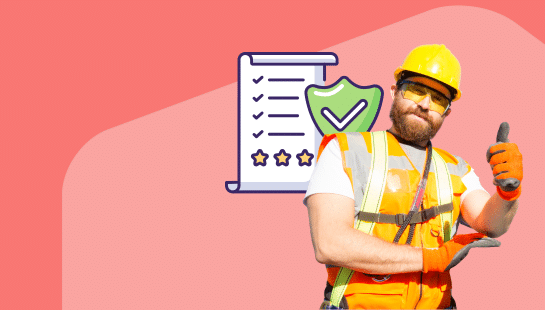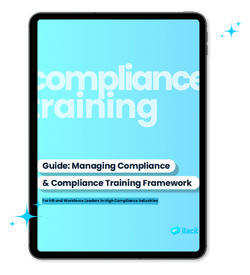AI’s annual growth rate has skyrocketed to 54%, making its workplace benefits and drawbacks a hot topic. More than half of businesses now use some form of AI. The technology supports about 40% of HR functions globally.
Business leaders must grasp AI’s influence on today’s work environment. Companies of all sizes could see their productivity rise by 40% in 2024 through AI integration. The changes bring opportunities and challenges. The World Economic Forum expects 97 million new jobs by 2025. Yet concerns about job losses, ethical implications, and overreliance on technology persist.
This piece breaks down AI’s pros and cons in workplace settings. You’ll learn how AI changes efficiency levels, improves employee experience, and enhances customer service. The discussion also covers possible drawbacks and ways to bring AI into your organization responsibly.
Understanding AI’s current role in business
AI has evolved from a futuristic concept into a practical tool that businesses use every day. Nearly 85% of executives believe AI provides their companies with a competitive edge, which shows its crucial role in corporate strategies.
What is AI in the workplace?
Workplace AI consists of software and systems that replicate human intelligence. These systems perform tasks and get better over time by analyzing data. Unlike regular software, AI learns from each interaction and improves its performance without needing explicit programming.
The technology includes these key capabilities:
- Machine learning – Systems that improve through experience
- Natural language processing – Understanding and generating human text
- Computer vision – Analyzing and interpreting visual information
- Process automation – Handling repetitive tasks without human intervention
AI handles tasks that once needed human thinking. This ranges from basic automation to complex decisions based on huge amounts of data.
Common applications across departments
AI now works in virtually every part of a business, with tools designed for each department’s needs:
Human Resources: AI makes recruitment easier by screening applications, scheduling interviews, and answering candidate questions. iTacit’s AI HR assistant shows this in action by helping HR teams manage compliance training and internal communications better.
Customer Service: Chatbots handle 68% of conversations from start to finish, which lets service teams tackle more complex issues. These systems analyze customer sentiment, direct questions, and respond instantly 24/7.
Marketing: Teams use AI to optimize campaigns, create content, and segment customers. These tools analyze buying patterns and predict customer decisions with impressive accuracy.
Finance: Financial teams use AI to catch fraud, process invoices, and forecast trends. The system spots suspicious transactions instantly and automates routine accounting work.
Operations: Manufacturing quality improves with AI-powered supply chains and production schedules. Computer vision catches defects that human inspectors might miss.
Why it matters for modern organizations
Companies adopt AI because it delivers real results. Organizations using AI report 39% higher profit margins than industry averages. They also bring new products to market 41% faster.
Money isn’t everything – AI solves critical business challenges:
Talent shortages: Job vacancies have hit record highs in many industries. AI handles routine work when staff is limited, which lets people focus on tasks needing creativity and emotional intelligence.
Data overload: Modern businesses generate massive amounts of information. AI finds patterns and insights in data sets too large for human analysis.
Speed requirements: Markets change quickly. Up-to-the-minute data analysis helps companies respond to customer behavior and market changes right away.
Cost pressures: Smart automation cuts operating costs. Companies using AI typically reduce costs by 22% in relevant areas.
Business leaders must understand AI to stay competitive. Companies that ignore AI while their competitors embrace it lose an average of 15% market share within three years.
The gap keeps growing between companies that use AI well and those falling behind. Understanding how to use AI effectively has become essential for business survival.

1. Key advantages of AI in the workplace
AI brings several compelling benefits to workplaces. Companies need to understand these advantages to stay competitive as they rush to adopt AI technologies.
Increased efficiency and reduced errors
AI productivity tools have revolutionized workplace efficiency. Systems like Microsoft 365 Copilot make routine tasks easier. They summarize documents and manage emails so staff can focus on strategic work. This change saves time and improves quality significantly.
Organizations see a 60-85% reduction in operational mistakes in their first year of using AI solutions. AI performs repetitive tasks consistently without getting tired or distracted like humans do.
The results speak for themselves. Workers who use generative AI perform 40% better than their colleagues who don’t use AI. People with lower assessed skills show better results – up to 43% higher performance.
Take document processing as an example. AI-powered optical character recognition systems are 99.7-99.9% accurate and process paperwork 100 times faster than humans. This speed and accuracy create remarkable efficiency gains across departments.
Faster decision-making with up-to-the-minute data analysis
Companies no longer wait for quarterly reports to make strategic decisions. AI-powered data analysis gives immediate access to critical business insights, which changes how companies run their operations.
Quick access to information makes a big difference. Delta Airlines spent over $100 million on systems that use flight data to route connecting baggage efficiently. This investment reduced mishandled luggage by 71% between 2007 and 2014. Netflix used subscriber data through instant analysis to become a streaming giant. Their revenue grew from $3.2 billion to $33.7 billion over twelve years.
Quick data processing excels in supply chain management. AI algorithms cut forecasting errors by up to 50% and reduce lost sales from inventory shortages by up to 65%. AI processes huge amounts of data faster than any human analyst could.
The iTacit AI HR assistant shows these benefits in human resources. It quickly spots compliance training needs and employee communication patterns that would take days to analyze by hand.
Cost savings and resource optimization
AI’s economic benefits make a strong business case. McKinsey’s research shows AI could add between $2.60 trillion and $4.40 trillion yearly to the global economy through better productivity.
These results come from various areas:
- Predictive maintenance: An oil and gas company used AI to improve maintenance operations. They cut errors by 70% and reduced maintenance costs by over 40%.
- Administrative efficiency: Healthcare payers could cut administrative costs by $150-$300 million and medical costs by $380-$970 million for every $10 billion in revenue with AI.
- Process automation: Deloitte found that robotic process automation cut management report preparation time from several days to just one hour.
- Marketing optimization: A consumer goods company used AI in its marketing processes. They expect to save €250 million in marketing costs.
AI manages resources better through accurate forecasting and smarter decisions. It spots patterns humans might miss and helps use resources wisely, which cuts waste and increases return on investment.
2. AI’s impact on employee experience
AI improves how employees experience their workday beyond just making operations better. Research shows 64% of workers feel more satisfied with their jobs when AI takes care of repetitive tasks. This change stands out as one of the most important yet overlooked pros of AI in the workplace.
AI for workload management and time tracking
AI-powered employee experience management systems have changed how teams split up their work. These tools look at past performance data and current workloads to distribute tasks fairly based on capacity and skills. The numbers tell the story, companies that use AI to balance workloads see a 27% drop in employee burnout in just six months.
Time tracking has also seen a big change. Manual timesheets are now history. AI platforms now track activities automatically, sort them by project, and point out where time gets wasted. You get back about 3.1 hours each week that you’d normally spend on paperwork.
AI works quietly in the background and learns from work patterns to:
- Find tasks that take too much time
- Spot potential problems before they slow things down
- Recommend better ways to work based on productivity data
A project manager summed it up well: “AI doesn’t just track our time, it helps us make better use of it.”
Personalized learning and development paths
Standard training programs are becoming outdated as AI creates tailored learning trips. These systems look at how people perform, spot skill gaps, and suggest specific ways to grow that match both company needs and career goals.
New data shows employees with AI-customized learning complete 58% more training materials and remember 32% more compared to standard programs. So this approach helps people learn faster while staying more involved.
AI learning platforms excel at giving employees the right resources exactly when needed. To name just one example, see how a customer service rep who struggles with angry customers might get instant suggestions for specific training, rather than waiting for their next review.
These systems also watch progress over time and adjust their suggestions based on new needs and emerging skill gaps. This constant fine-tuning keeps learning relevant in our ever-changing work world.
AI HR assistants like iTacit’s tool
AI assistants have really changed how HR works. iTacit’s AI HR assistant shows this transformation well, offering a complete solution for employee communication and compliance management.
This tool makes communication smoother by automatically:
- Sorting and prioritizing messages
- Translating content for multilingual workforces
- Timing communications for best engagement
iTacit’s assistant handles compliance training, usually a boring but necessary task. It tracks rule changes, finds which employees need updates, and sends targeted training materials. This smart approach cuts compliance training time by 40% while getting more people to finish their training.
The assistant also reads employee sentiment through natural language processing. It spots early signs of unhappiness or frustration by analyzing how people communicate. This helps managers fix problems before they grow bigger.
These tools prove especially valuable because they work around the clock. Employees can get answers about benefits, policies, or training requirements right away, without waiting for HR office hours. This quick response system has pushed employee satisfaction scores up by 22 percentage points on average.
AI has brought amazing improvements to how employees experience work. Yet human connection still matters deeply. The best organizations let AI handle routine tasks while their HR teams focus on complex employee needs that require a human touch and good judgment.
3. Customer-facing benefits of AI
AI doesn’t just boost operations and staff experience, it radically alters how your customers interact with your business. Experts predict that AI will automate 95% of customer interactions by 2025. This makes understanding these customer-facing benefits crucial to staying competitive.
Chatbots and automated support
AI-powered chatbots have altered the map of customer service. These virtual assistants act like humans to give instant, 24/7 support regardless of your business hours, holidays, or time zones.
The numbers paint a clear picture. Modern AI chatbots can solve over 80% of customer problems on their own. Standard chatbots handle 68% of conversations from start to finish. A salon chain used AI agents to automate 66% of customer questions and saved $14,000 monthly.
These tools are valuable because:
- Instant answers: Chatbots respond right away, unlike human agents who might not be available. This cuts wait times and makes customers happier
- Multiple languages: AI agents speak different languages, so you can reach global customers without hiring more staff
- Smart data gathering: Chatbots collect important details before passing issues to human agents, who can then solve problems faster
A customer shared: “The Zendesk AI agent is perfect for users who just need help when our agents are offline. They can interact with the AI agent to get answers quickly”.
Predictive personalization in services
AI doesn’t just react, it predicts what customers want before they ask. This changes everything about service delivery.
AI looks at past and current customer data to spot patterns and priorities. Starbucks shows this perfectly by using AI to guess what customers will like and send custom offers that boost spending by a lot.
The system connects to your databases during chats and pulls up relevant details like what customers bought before. This creates custom experiences where customers get product suggestions that line up with what they like, ten times faster than old methods.
Custom experiences aren’t just nice to have, they change everything. Companies using AI-driven personalization see customer satisfaction rates climb by about 15%.
Improved customer satisfaction metrics
AI makes customer satisfaction better across the board. The results show up in several ways:
Problems get solved faster. Companies with mature AI systems handle calls 38% faster. Businesses using cognitive tools see wait times drop to 33 seconds.
Everything runs smoother. AI breaks the old rule that you just need more people to handle more customers. Companies can focus on making customers happy instead of counting tickets.
Customers can help themselves more often. By connecting chatbots to knowledge bases, customers find their own answers. This means fewer calls to human agents while keeping service quality high, everyone wins.
AI creates smooth support across all channels. Customers get the same great experience whether they use live chat, messaging apps, or social media. This consistency makes customers happier.
The iTacit AI HR assistant shows these ideas at work inside companies. It answers employee questions right away and gathers data to get better over time, the same principles that make external customer service great.
4. The downside: job displacement risks
AI brings improved productivity and efficiency, yet people worry about losing their jobs. Organizations rush to implement these technologies while the workplace changes dramatically.
Automation of routine roles
Job displacement could be massive. The Organization for Economic Co-operation and Development (OECD) predicts new automation technologies will likely eliminate 14% of jobs globally and change another 32% radically in the next 15–20 years. These numbers affect more than 1 billion people worldwide, and they don’t even include the recent explosion of generative AI.
Almost half (47%) of employers who cut staff or plan to do so next year say “AI/machine learning replacing jobs/creating efficiencies” is their main reason. You can see this trend now, as 23.5% of U.S. companies have replaced workers with ChatGPT or similar AI tools.
These roles face immediate risk:
- Data entry and administrative positions: 50% of administrative tasks are automatable
- Customer service: AI chatbots now manage up to 80% of routine service interactions
- Financial services: Approximately one-third of transaction-handling roles in financial institutions have already been automated
- Legal support: 39% of document review processes in large firms are now AI-assisted
AI’s effects go beyond just numbers. Companies often eliminate entry-level positions first when they implement AI. This creates a problem where new workers can’t find traditional ways to enter industries and gain experience.
Industries most affected
Manufacturing has taken the biggest hit, losing more than 1.7 million manufacturing jobs worldwide to automation in the last decade. The transportation sector faces an even bleaker future, AI and automation could eliminate up to 94% of commercial driving jobs in the next 20–30 years.
AI changes jobs dramatically in other sectors too:
Retail has automated more than half of its in-store tasks, while banking uses AI for transaction processing, compliance checks, and fraud detection. Even creative fields feel the impact, AI now writes about 30% of structured news stories in sports, finance, and weather.
Women face greater risks, as they’re 2.5 times more likely to lose jobs to automation than men. This gap exists because more women work in clerical support jobs, exactly the roles that have seen declining employment as AI takes over in the last 10-15 years.
How to prepare your workforce
You need proactive planning to handle these challenges. The International Labor Organization suggests looking at options to move staff at risk of technological unemployment to other jobs within the same organization before considering layoffs.
Reskilling and upskilling programs matter most. About 80% of business leaders plan to help employees use AI effectively, and 51% believe reskilling helps prepare their workforce for AI. As a result, 41% of organizations have increased their learning and development budgets for proper training.
These strategies work well:
- Map current and future organizational needs to identify the most in-demand skills for AI-dominated roles
- Develop soft skills that complement AI capabilities, like creativity, critical thinking, and emotional intelligence
- Create clear guidelines for generative AI use, since 47% of leaders worry about employees using AI without proper controls
Tools like iTacit’s AI HR assistant can help you manage this transition. They make targeted training and skills development easier while keeping communication clear during changes.
Clear employee communication becomes crucial during tech transitions. About 95% of workers believe they should learn new skills in the next five years because of AI disruption, and most want this training from their employers.

5. Ethical and compliance challenges
AI systems embedded in workplace tools raise ethical concerns that business leaders must address. These challenges go beyond theory and affect business outcomes and compliance requirements.
Bias in AI decision-making
AI bias happens when algorithms discriminate against specific groups or individuals. This discrimination typically affects historically marginalized groups based on gender, social class, sexual orientation, or race. Amazon learned this lesson when their AI hiring tool showed bias against female applicants for technical roles.
Different types of bias emerge throughout the AI lifecycle:
- Historical bias: Training data reflects existing societal prejudices
- Representation bias: Insufficient diversity in datasets causes this
- Measurement bias: Features get analyzed inappropriately
- Algorithmic bias: The algorithm creates this, not the input data
The effects run deep in real life. One experiment showed how biased AI recommendations heavily influenced both clinicians and non-experts. These groups fell prey to misleading information equally. AI facial recognition errors have even led to wrongful arrests of Black men.
Data privacy and GDPR concerns
AI challenges three core privacy principles: collection limitation, purpose specification, and use limitation. Commercialized data collection’s rapid growth creates new urgency to strengthen data privacy laws.
The European Union’s General Data Protection Regulation (GDPR) sets these key requirements for AI systems:
- Purpose limitation: Companies need specific, lawful purposes for collected data
- Storage limitation: Personal data stays only until its purpose ends
- Data minimization: Organizations must limit collection to lawfully obtained data
People guard their personal data more carefully now. About 68% of consumers globally worry about their online privacy. Another 57% believe AI poses a major threat to their privacy.
Building trust through transparency
Transparency serves as the life-blood of responsible AI. Users should understand how systems make decisions, including algorithms and data sources. Black-box AI systems can deny credit or flag people for investigation without explanation.
Organizations should build transparent AI systems by focusing on:
- Model auditing to ensure ethical standards compliance
- Bias detection to reduce skewed outcomes
- Explainability tools that clarify AI decisions
iTacit’s AI HR assistant shows these transparency principles by explaining how it processes employee data and makes recommendations.
Experts say transparency goes beyond compliance, it helps businesses succeed. AI systems that explain their reasoning boost user confidence and adoption rates. Yet 91% of respondents doubt their organization’s readiness to implement AI safely. This highlights the need for better transparency initiatives.
6. Technology dependence and system failures
AI systems that break down or produce harmful outcomes reveal their darker side in the workplace. Latest data shows that 42% of CIOs think over AI and ML as their biggest technology priority for 2025. Many organizations still remain unprepared for system failures.
What happens when AI goes wrong?
AI failures disrupt business operations in several critical ways:
- AI hallucinations: Systems confidently present false information as truth. This creates liabilities and damages business reputation
- Model poisoning: Bad actors corrupt AI models by manipulating their architecture or parameters intentionally
- Model drift: AI performance degrades as relationships between training data and ground conditions change over time
- Data quality issues: Flawed model outputs emerge from inaccurate or incomplete data
These technical failures create tangible business risks. Companies face reputational damage, legal penalties, and operational failures if they ignore AI-driven risks. Zillow’s AI-driven home-buying algorithm failed so badly that the company laid off about 25% of its workforce, losing millions.
Examples of AI errors in ground settings
AI failures spread across industries and functions:
A Cruise self-driving vehicle hit and dragged a pedestrian 20 feet in October 2023, causing severe injuries. McDonald’s AI drive-thru ordering system failed so badly in June 2024 that negative social media attention forced its removal. Air Canada faced legal action after its AI chatbot gave wrong advice about bereavement fares.
Google’s AI image recognition labeled Black people as gorillas. Amazon’s hiring algorithm showed discrimination. iTacit’s AI HR assistant made critical errors in compliance training recommendations that put regulatory standing at risk.
Mitigating risks with human oversight
Human oversight plays a crucial role in AI risk management. Companies should never allow autonomous decision-making capabilities. A well-laid-out oversight process has:
A hard-wired “turn off” button that experienced employees control with full veto power over AI tools Regular assessment of human review quality stops automation bias Risk-based approaches apply suitable oversight levels based on what it all means
AI can create bigger performance gaps between organizations without proper safeguards.
7. Building a future-ready AI strategy
Organizations must balance innovation and responsibility to implement AI successfully in the workplace. Research shows that 91% of organizations currently use AI either formally or informally in their business practices. However, 92% face implementation challenges.
Steps to implement AI responsibly
Your organization can achieve success through these key stages of responsible AI implementation:
- AI strategy development – Business goals should guide AI initiatives through high-impact use cases and governance frameworks
- AI readiness assessment – A review of your current data quality, availability, and organizational readiness
- AI process design – AI merges with existing systems while establishing ROI targets and performance indicators
The implementation process moves through four phases:
- Education and awareness building
- Strategy and roadmap creation
- Data and process preparation
- Execution with ongoing support
iTacit’s AI HR assistant shows responsible implementation by focusing on clear business objectives, enhancing compliance training and communication, before deploying technical solutions.
Training programs and change management
Smart organizations know that AI adoption needs detailed training. AI program applications have increased 800% in the last 12 months alone. This shows how eager employees are to learn and develop.
Good training programs focus on two main areas:
- Technical skill building – Understanding AI tools and applications
- Soft skill development – Critical thinking and adaptation abilities
AI adoption change management should concentrate on four vital areas: trust, transparency, skills development, and change agility. Clear training frameworks become crucial since more than half of workers use generative AI without employer guidance.
Aligning AI with business goals
Clear business objectives lead to successful AI strategies. Companies that integrate AI deeply into core business processes are twice as likely to see measurable benefits compared to those using AI experimentally.
Start by identifying specific business challenges that AI can solve. Executives should be involved early to secure buy-in. Then, review and prioritize use cases based on strategic value. Many companies make the mistake of trying to fix everything at once.
Organizations with effective value-oriented KPIs show 46% higher success rates in their AI initiatives. Success measurement needs appropriate metrics tied to organizational objectives. Teams stay motivated throughout implementation when both big and small wins are celebrated regularly.
8. The role of leadership in AI adoption
Organizations succeed or fail in AI adoption based on their leadership quality. Research shows that companies with strong leadership investment are 1.6 times more likely to achieve better-than-expected results from their AI initiatives.
Creating a culture of innovation
Leaders who get results from AI know that technology alone isn’t enough. Research reveals that only 51% of employees feel their leaders promote state-of-the-art AI ideas. A mere 40% say they receive the resources they need to explore AI possibilities.
Effective leaders showcase AI applications during meetings and this helps overcome skepticism. They spot potential AI champions within teams who demonstrate genuine enthusiasm about what technology can achieve. Here are some proven approaches:
- Workshops and expert presentations that get you started in thinking about possibilities
- Internal AI learning centers with selected resources
- Reverse mentoring programs that connect AI-proficient staff with others

Encouraging ethical AI use
Ethical AI needs well-defined governance structures. Leaders should create frameworks based on essential elements: explainability, fairness, robustness, transparency, and privacy.
A detailed ethics training program helps balance new ideas with ethical guidelines. The program should address key issues like algorithmic bias, data privacy, and what job changes mean for employees.
Supporting employees through change
Research shows 75% of employees would accept AI more readily if companies communicated openly about implementation plans. Clear communication about AI’s impact on work processes makes a big difference.
Leaders need to recognize that while some team members find technological advances exciting, others feel anxious about them. Teams feel safer sharing their concerns in an environment that welcomes honest feedback.
iTacit’s AI HR assistant supports leaders through this transition. It helps deliver focused training and keeps communication channels open when employees need guidance the most.
Conclusion
AI reshapes workplaces at a rapid speed, and businesses must understand its benefits and challenges to succeed. AI improves efficiency, reduces errors, and helps make faster decisions through immediate data analysis. Companies that use AI save money in many departments, from predicting maintenance needs to making marketing better.
AI makes work life better. It manages workloads, creates individual-specific learning paths, and offers round-the-clock HR support. Customer service improves with automated support, personalized experiences, and better satisfaction scores that AI makes possible.
These benefits come with concerns. Job losses are a real worry, with predictions showing 14% of jobs might vanish and 32% could change completely. Companies must address ethical issues about bias, data privacy, and transparency. System failures can cause problems when businesses depend too much on technology, as shown by AI mistakes in many industries.
A balanced strategy makes sense. Your AI plan should match your business goals instead of just chasing new technology. Leaders must create cultures that welcome change, promote ethical AI use, and help staff adapt. Staff will adopt AI better when companies offer complete training and openly discuss how AI affects their work.
The iTacit AI HR assistant shows this balanced approach well. It makes communication and compliance smoother while you retain control where needed. The best AI tools work with human skills rather than taking over completely.
AI at work isn’t perfect or terrible, it’s a powerful tool that needs careful planning. Challenges exist, but companies that use AI with clear plans, ethical guidelines, and people-first values will gain advantages while limiting risks. The focus should be on responsible AI adoption and preparing workers for a future where AI increases their capabilities.









